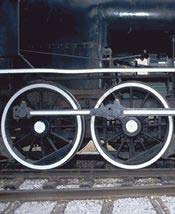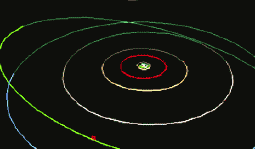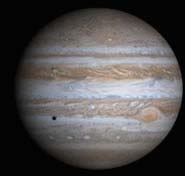Hubble Telescope Reveals Clues to Unusual White Dwarf’s Origins Astronomers at the University of Warwick have uncovered compelling evidence that a nearby white dwarf star is the result of a rare stellar collision. Using data from the Hubble Space Telescope, researchers identified subtle carbon signatures in the star’s ultraviolet spectrum — a discovery that points to a past merger between two stars. White dwarfs are the dense, compact cores left behind after stars exhaust their fuel. Typically Earth-sized but with…

Astronomers at the Gemini telescope in Hawaii have obtained a complete, multi-dimensional picture, of the dynamic flow of gas and stars at the core of an active galaxy [NGC 1068] located 70 million light years away. The image was achieved in a single snapshot and is the first time such a picture has been obtained by one of the new generation of giant telescopes with an 8 – 10 metre light collecting mirror. The astronomers used a new instrument – the Integral Field Unit (IFU), designed and built at Du

The European Space Agency (ESA) and the Canadian Space Agency (CSA) have announced a call to communication companies who are interested in undertaking a contract for brand communication services related to the International Space Station (ISS).
The contract is a significant move for ESA and CSA who want to heighten the profile of the ISS within Europe and Canada to help meet the commercial objectives of the Space Station.
The two organisations want to hear expressions of interest

In a joint project between the Technology Foundation STW and the energy agency Novem at Utrecht University, researchers have developed new silicon layers which are more stable and cheaper than the present amorphous silicon layers. The electronic properties of the present layers in laptop screens and solar cells deteriorate if the material is under ‘stress’, for example due to sunshine or a voltage.
Flat-panel displays and solar cells have a substrate of glass or plastic, which is coated with

Light bending reveals clumps of matter around early galaxy.
European astronomers have got their first glimpse of the soup of matter that surrounded a galaxy in the early Universe, just 3 billion years after the Big Bang. Their results provide clues as to how this matter got together, which is crucial to understanding why the Universe looks the way it does today 1 .
The 12-billion-year-old galaxy is called MS 1512-cB58. It is not the earliest galaxy known, but

Spot-welds stick sliding metals
Two smooth, cold, metal surfaces are like pieces of tacky Sellotape. They form tiny spot welds that have to be broken apart before they can slide over each other. This, claim two physicists in California 1 , is another reason why metals stick as they slip if they are pressed together and pushed.
Such microscopic causes of friction and wear are increasingly important as the scale of mechanical engineering shrinks to below what

Successful Test Observations With Powerful New Instrument at Paranal
One of the most fundamental tasks of modern astrophysics is the study of the evolution of the Universe. This is a daunting undertaking that requires extensive observations of large samples of objects in order to produce reasonably detailed maps of the distribution of galaxies in the Universe and to perform statistical analysis.
Much effort is now being put into mapping the relatively nearby space and the

+++ EURESCOM for the first time demonstrates seamless access with a PDA. +++
Premiere at the EURESCOM workshop `Wireless Access` in Heidelberg on 12 March: The EURESCOM project on `Bluetooth Access` presented the first PDA, which can seamlessly connect to different access networks, like LAN, Bluetooth, Wireless LAN, and GPRS.
In co-operation with the software company Birdstep from Norway and access point supplier Patria Ailon from Finland, the European project team implement

Bouncing laser beams could bring quantum strangeness to the everyday world.
The quantum world of atoms and subatomic particles is full of intuition-defying phenomena such as objects existing in two different states at once. We don’t normally have to worry about such weirdness impinging on our everyday macroscopic world. But Italian physicists have worked out how to invest something we can see and touch with quantum strangeness.
Stefano Mancini, of the University of Mila

Surplus of Intergalactic Material May Be Young Supercluster Observations with ESO`s Very Large Telescope (VLT) have enabled an international group of astronomers to study in unprecedented detail the surroundings of a very remote galaxy, almost 12 billion light-years distant. The corresponding light travel time means that it is seen at a moment only about 3 billion years after the Big Bang. This galaxy is designated MS 1512-cB58 and is the brightest known at such a large distance and

New algorithm exploits community structure of the web.
The web has spontaneously organized itself into communities. A new search algorithm that pinpoints these could help surfers find what they want and avoid offensive content.
Page builders can link anywhere. But they don’t, Gary Flake, of the NEC Research Institute in Princeton, and his colleagues have found. Instead, pages congregate into social groups that focus most of their attention on each other.
Web dir

Jumps in space-time might explain the curious survival of energetic particles.
Space and time must be grainy, not smooth. Otherwise high-energy particles produced in astrophysical processes would not be detectable on Earth.
So says Richard Lieu of the University of Alabama in Huntsville. Many agree that jumps in space-time occur on scales that are far too small to measure, but the idea has not yet been proved. Lieu now shows that using this hypothesis can explain how highly

Sci-fi experts know that many seemingly impossible technologies materialise years later, but unfortunately this may not to be the case for warp-drive – travelling through space faster than the speed of light. The favourite science fiction theory of space contracting in front of spacecraft, and expanding behind it to form warp-drive is under threat according to new work by a researcher in Portugal published today in the Institute of Physics journal, Classical and Quantum Gravity.
General re

Physicists design material that conducts one way and insulates the other.
European physicists have sketched out a blueprint for a valve that lets heat pass only one way. The proposed material conducts heat flowing in one direction, but also behaves as an insulator, stopping it going the other way 1 .
In theory, a heat valve could keep parts of microelectronic circuitry cool or channel heat to chip-sized chemical reactors, which are currently being developed fo

A new analysis of the mineral composition of meteorites suggests that theories concerning the development of the early solar system may need revision. Announcing their results today in the journal Science, researchers conclude that it took the earth only 20 million years to form from material floating around the early sun. Previous estimates, in contrast, had placed that figure at around 50 million years. The findings also re-open the debate over which types of supernovae could have produced our sola

A space probe carrying British-designed and operated instruments has helped scientists to understand the magnetosphere surrounding Jupiter better than ever before.
Its magnetosphere was observed to contract in response to shock waves generated at the Sun, the first time scientists have been able to clearly observe how changes in the solar wind affect the magnetosphere of this giant planet.
In addition an unexplained pulsating X-ray hot spot near Jupiter’s North pole has been obser

Researchers have developed a sophisticated way of measuring the print quality of paper. The work, published today in the Institute of Physics journal, Measurement Science and Technology, describes how Jari Palviainen and colleagues at the Universities of Joensuu and Oulu in Finland, use what is known as a diffractive optical element-based sensor to investigate how laser-light interacts with paper before and after laser printing with colour ink.
The physical properties of paper such as colou